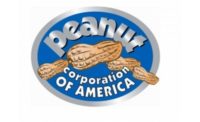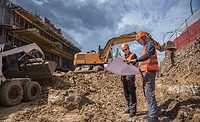Packaging
Mitigating the impact of package leaks
Package leaks can cut shelf life, create food safety hazards

The food industry is undergoing rapid change, much of which is driven by high consumer and retailer expectations when it comes to food freshness, quality, safety and expedience. That’s a tall order for brands to fill while also focusing on innovation and adapting packaging to align with changing retail trends such as e-commerce.
No matter which channel consumers choose to buy their food products from – a brick-and-mortar store or online – a key component of safety and quality is shelf life. And while the food industry has long been developing innovative ways to preserve foods for extended periods, ranging from the use of protective gases to antimicrobial packaging materials, many companies underestimate the importance of testing their packages for leaks to deliver on these promises to consumers.
Threats to Consider
Package leaks open the door to a variety of elements that can have a negative impact on food safety and quality. For example, bacteria, fungi and yeasts are often responsible for premature product spoilage. Large pores in food packages allow these microscopic bacteria to penetrate and multiply. This causes them to decompose organic matter and produce pathogenic substances, potentially endangering the health of consumers.
Many foods are also subject to oxidation, especially unsaturated fatty acids, such as oleic acid. The oxidation of food can also damage amino acids, causing a breakdown in vitamins and ultimately a change in flavor and color. Some food producers use special protective gases, which are very toxic and have a low oxygen level. However, if the packaging has a leak, the concentration of a protective gas may change because gases in the air and the atmospheric oxygen are able to penetrate the package.
Lastly, moisture poses a high risk, especially for dry products such as chips and baked goods because it enables mold growth and accelerates the process of food spoilage. Coffee and other foods also run the risk of being affected by moisture, as flavors tend to evaporate more readily in humid climates.
Solutions for Safety
The good news is that leak detection technology can provide a much-needed solution to these critical issues. Several leak testing methodologies exist including water bath testing, gas-based testing and pressure increase method testing in a foil chamber. Food producers should examine their requirements and needs in detail before choosing a leak testing method.
Key factors to consider include:
- What is the acceptable leak rate for a product? This rate varies vastly between perishable products such as dairy-based cheeses and foods such as dried fruits and vegetables. Leak detection equipment suppliers should be able to provide guidance and counsel in this area.
- Are the existing testing equipment, process and methods repeatable and reproducible from operator to operator, shift to shift and plant to plant?
- Is a non-destructive method appropriate? Whether it is a gross leak or a fine leak that it is undetectable to the naked eye or via the water bath method, non-destructive approaches eliminate the need for tracer gas and eliminate the risk of causing damage to the package.
- Is an inline or offline application best suited for the manufacturing environment? A technology that is effective both inline and offline affords manufacturers the utmost flexibility in their operations.
With so many avenues for people to access their goods today and endless options at consumers’ fingertips, it’s critical for brands to ensure their packages are free from product-compromising errors. Package leaks should not be overlooked, as they can lead to food spoilage due to the infiltration of unwanted elements, and ultimately significantly impact a brand’s image and bottom line.
Looking for a reprint of this article?
From high-res PDFs to custom plaques, order your copy today!





